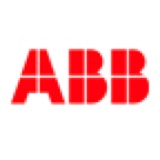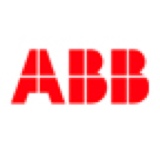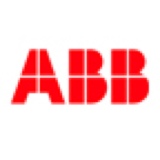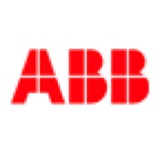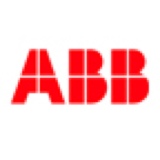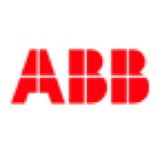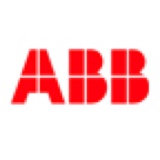Information
-
Audit Title
-
Document No.
-
Client / Site
-
Conducted on
-
Prepared by
-
Location
-
Personnel
Rapport de l'audit précédent
-
Est-ce que les actions correctives de l'audit précédent sont soldées ?
-
Est-ce que toutes les questions antérieures ont été clarifiées ?
Mesures de management
-
Vérifier que la liste des personnes ayant des responsabilités définies en matière HSE est présenté sur site et diffusée au conseiller HSE de la division<br><br>Personnes pouvant signer le plan de prévention<br>Personnes ayant délégation de pouvoir HSE<br>
-
Vérifier que les entreprises ont fournis les documents et assurances obligatoires
-
Vérifier les affichages obligatoires, ainsi que les panneaux mis en place concernant le site.<br>(Port des ÉPI, échafaudages, interdictions de fumer, gestion de la circulation des véhicules et piétons, point de rassemblement, infirmerie., trousse de premiers soins, etc)
-
Est-ce que le voisinage est informé de ce projet <br>(Affichage, courrier, information lors d'une réunion)
-
Présence d'un document (registre) pour l'enregistrement des incidents. <br>(Conforme aux exigences CNIL)
-
Présence d'une supervision adéquate sur le site, en particulier pour les tâches à haut risque et pour les jeunes travailleurs
-
S'assurer que toutes les personnes sur site sont familiarisées avec les règles de sécurité et qu'elles les respectent
-
S'assurer que tous les contractants (sous-traitants et partenaires) ont fourni les informations relatives à la sécurité du travail qu'ils entreprennent
-
S'assurer que les règles de sécurité du site sont affichées, notamment dans les zones telles que la réception du site, l'entrée du site, la cantine, les vestiaires, les bureaux du site, etc.
-
S'assurer que les sous-traitants on été évalués (présélection, etc.) et ont les ressources adéquates et un personnel formé et compétent pour le travail à réaliser.
-
S'assurer que les employés et sous-traitants sur site ont un badge d'accès valide, et les qualifications (habilitations) requises
-
S'assurer que les qualifications et habilitations sont appropriées aux tâches à exécuter. Et font l'objet d'un enregistrement et d'un suivi
-
Considérez vous que les mesures de management du site sont conformes ?
Accès et sortie du site
-
S'assurer que les accès et sorties (de toutes les zones de travail sur le site) ont le niveau de sécurité requis
-
Est-ce que les zone de circulation pour les piétons sont clairement identifiées et protégées ( notamment par rapport à des véhicules en mouvement)
-
Est-ce que les allées et voies de circulation sont libre de tout obstruction, stockage de matériaux, etc.
-
Est-ce que les voies d'accès et allées sont suffisamment éclairées
-
Considérez vous que les accès et sorties du site sont conformes ?
Access - External
-
Ensure site access points are clearly signposted on the approaches to the site.
-
Ensure all signage is in accordance with Chapter 8 of the New Roads & Street works Manual.
-
Ensure adequate on-site signage is provided to warn and advise both vehicle drivers and pedestrians.
-
Ensure that adequate lighting is provided, including flashing amber warning beacons where appropriate.
-
Ensure any floodlights do not dazzle drivers on the site or on adjacent public/private roads.
-
Ensure any lighting does not cause a nuisance to local residents.
-
Ensure that there is always a clear access route to and from all parts of the site.
-
Have access routes been agreed with the fire and other emergency services prior to the start of works.
-
Ensure the approaches to the site are kept clear of site traffic.
-
Has any parking of contractors vehicles on the approach roads been agreed with the Highways Authority?
-
Are major deliveries timed so as to avoid school drop-off and pick-up times and other rush hour times?
-
If necessary has the use of traffic lights to control traffic around site entrances been considered?
-
Ensure approach roads are kept clean and tidy and that any debris is removed promptly.
-
Ensure there are suitable barriers and warning notices to keep members of the public separated from the site works and site traffic.
-
Ensure safe pedestrian access is provided across all site entrances.
-
Where work at height is carried out adjacent to the public highway/footpath ensure that protective fans or other measures are provided to safeguard members of the public.
-
Ensure the site is securely fenced at all times to prevent unauthorised access.
-
Are the following carried out At the end of each day/shift ;<br><br>secure tools, plant and equipment; remove or board ladders to restrict access; cover and fence excavations; store and secure hazardous materials/substances; ensure materials are properly stacked and choked.
-
Ensure all public access routes are kept clean and clear at all times.
-
Ensure adequate signage is provided to direct members of the public.
-
External Access Compliant?
Asbestos Management
-
Has an asbestos survey been carried out in accordance with HSG264?
-
Has a detailed risk assessment and method statement been carried out?
-
Have the results of the server been communicated to relevant parties?
-
Have enclosures been tested?
-
Have positive pressure units been tested?
-
Are air testing results in place?
-
Are certificates of re-occupancy in place?
-
Are waste consignment notes in place?
-
Has the HSE been informed before any work has been undertaken (14 day notice)?
-
Is the removal company licenced?
-
Are medical certificates of the persons doing the work in date?
-
Is the work being carried out in a controlled and safe manner?
-
Has the asbestos been disposed off in accordance with the special waste regulations ?
-
Are emergency procedures in place for inadvertent exposure?
-
Is the presence of asbestos included in the site induction?
-
Asbestos Management Compliant?
Cartridge Operated Tools
-
Are the manufactures instructions being followed?
-
Has the operator/s been properly trained?
-
Is the operator/s wearing eye protection?
-
Is the gun cleaned regularly?
-
Are the gun cartridges keep secure when not in use?
-
Is there a system in pleace for accounting for cartridges?
-
Is the use of cartridge tools compliant?
Compressed Gasses (e.g. LPG, Acetylene)
-
Are they kept away from flammable liquids?
-
Are the properly stored in a purpose made cage?
-
Are gasses segregated by type?
-
Is the cylinder valves fully closed when not in use?
-
Do all lines have anti-flashback arresters fitted (except for LPG fired blow heaters/torpedo heaters?
-
Do all line connections only have approved fittings and clips, with no Jubilee clips?
-
Compressed gasses compliant?
Confined Spaces
-
Confined Spaces include manholes, shafts, pits/tanks, pipes/culverts, certain excavations, silo's and other confined/enclosed spaces.
-
All work in confined spaces should be subject to a specific risk assessment and be carried out in accordance with Permit to Work/Enter and a safe system of work.
-
Only appropriately trained and qualified persons who have undergone an accredited confined spaces entry course shall be permitted to enter a confined space, and only then if the correct checks have been made and the correct safety equipment (breathing apparatus, gas detection equipment, emergency escape equipment etc) are used.
-
Is there a risk assessment for the confined spaces work?
-
Ensure all confined space permits have been checked, are valid and being strictly enforced.
-
Controls should include atmospheric monitoring, emergency escape arrangements, adequate supervision (i.e.: a top man outside of the confined space), method of raising the alarm and safe access/egress etc.
-
Check permits are closed and cancelled upon completion of the works.
-
Confined Spaces compliant?
Consultation
-
Has a system been established for employees to comment and be consulted on health, safety and welfare issues.
-
Is there a site suggestion box?
-
Is there a safety joint committee / forum ?
-
Are minutes and actions from meeting available and published on site?
-
Are any actions being implemented ?
-
Ensure appropriate Tool Box Talks are given to all employees and that the Tool Box Talks are appropriate and relevant to the work being undertaken.
-
Ensure that an attendance register has been maintained and signed by all persons present at each Tool Box Talk.
-
Consultation compliant?
Control of Substances Hazardous to Health (COSHH)
-
Have COSSH Assessments been carried out for all potentially hazardous materials and substances being used on the site.
-
Are material safety data sheets available to assist with COSHH assessments.
-
Have the hazards associated with the use of such materials been properly communicated to those affected.
-
Are alternative safer substances available which can be used as substitutes.
-
Ensure all dangerous/hazardous materials/Substances are clearly marked/identified and stored in a secure location appropriate to the substance.
-
Have the appropriate control systems and PPE been provided and is the PPE being used.
-
COSHH Compliant?
Demolition Operations
-
Has a competent person been appointed to oversee the demolition operations?
-
Has the structural stability been checked and are temporary supports in place where required?
-
Are any temporary works designed required?
-
Where required has the scaffolding been netted, monaflexed or hoarded off?
-
Have all services been disconnected?
-
Is the area barried off and suitably signs in place.?
-
Is there adequate dust suppression where required?
-
Is there sutable noise controls in place?
-
Is there suitable lighting?
-
Is material being removed from site on a regular basis and not allowed to accumulate?
-
Are all demolition operatives adiquitly trained, supervised and instructed?
-
Demolition Operations compliant?
Electrical Equipment
-
Check that all necessary utility services are provided on site before work begins.
-
Ensure that existing services e.g.: electricity cables, gas mains etc have been identified and effective steps have been taken to prevent danger from them.
-
Check that low voltage tools and equipment are being used wherever possible.
-
Check that only 110v CTE hand tool etc are in use.
-
Check that cables and leads are protected from damage.
-
Check all connections are properly made and suitable plugs are used.
-
Check that tools and equipment are visually checked and regularly inspected/tested by a competent person. (PAT)
-
Ensure that cables and trailing leads are not trip hazards.
-
Check that all temporary supplies are effectively bonded to Earth.
-
Do all temporary supplies have a means of isolating both poles and locking off?
-
Ensure that suitable and sufficient task lighting is provided to enable operatives to safely carry out their work.
-
Electrical Equipment compliant?
Environmental Management
-
Site wide issues
-
Is there any evidence of nesting birds, if so are protection measures adiquate?
-
Is there any evidence of invasive plants, if so are precautions adiquate?
-
Note - it is an offence to propagate or cause to spread Japanese Knotweed, Giant Hogweed, Ragwort and Himalayan Balsam.
-
Is the site free from trees that have a tree protection order (TPO)?
-
Energy efficiency
-
Have all practical measures been implemented to increase the energy efficiency of the site.
-
Do all Cabins comply with environmental minimum standards?
-
Carbon footprint measurement process in place?
-
Environmental Emergency
-
Is an Emergency Plan in place?
-
Evidence of ongoing review?
-
Is it communicated via induction?
-
Is it tried and tested?
-
General Environmental Management
-
Are environmental guidance notes available on site?
-
Have all potential pathways been identified and addressed?
-
Are any concrete washout facilities suitable?
-
Are any consents required?, if so are they being monitored and complied with?
-
Is a local drainage plan available on site?
-
Are any noise/dust issues present and are they being suitably controlled?
-
Are weekly environmental checks taking place?
-
Local Community
-
Is there a complaints procedure in place?
-
Are there effective measures in place to prevent light pollution?
-
Is plant and equipment fitted with suitable and effective silencers?
-
Any evidence of liaison with local schools?
-
Environmental Registers
-
Is the environmental register up to date and relevant?
-
Is the site registered under the hazardous waste regulations?
-
Is an Aspects & Impacts register in place - risk prevention measures identified etc.?
-
Spill Response
-
Are spill kits available?
-
Located in the correct areas?
-
Staff and operatives aware of their location?
-
Have emergency drills taken place?
-
Is their location communicated via induction?
-
Are the contents regulary checked?
-
Working on or near water
-
Are consents in place?
-
Is any silty water being treated or disposed of to foul?
-
Are appropriate pollution prevention measures in place and adequate?
-
Are soil heaps located away from rivers/streams?
-
Environmental Management compliant?
Excavations/Earthworks
-
Ensure that checks are made to determine the presence of any buried services before and during all excavation works.
-
All excavations should be carried out in accordance with a detailed method statement s and permit to dig. Is there a permit to dig?
-
Check that there is adequate support and propping for the excavation, or whether it has been sloped or battered back to a safe angle.
-
Check that there is a safe method used for placing supports, without the need for operatives to work in an unsupported trench.
-
Check that there is safe access into the excavation (i.e.: a sufficiently long and secured ladder).
-
Check that barriers or other protection to stop people/vehicles falling in are in place.
-
Does the excavation affect the stability of neighbouring structures or services.
-
Ensure that materials, spoil and plant is stored away from the edge of the excavation to reduce the chance of collapse.
-
Ensure that the excavation is regularly inspected by a competent person and that a record of such inspections is maintained.
-
Excavations/Earthwork compliant?
FASET Safety Netting
-
Are all nets within a 5-10% sag across the span?
-
Are the nets as close as possible?
-
Are primary supports suitable?
-
Is their a hand over certificate in place?
-
Are tie rope knots/attachments secure?
-
Is attachment spacing less than 2.5m or as per manufactures instructions?
-
Are the nets free from gaps?
-
Do and overlapped nets have an minimum overlap of 2m or they pinned or laced?
-
re there any wasting gaps at the eaves?
-
Is a suitable clearance distance available?
-
Is there a rescue / recovery plan in place?
-
Safety Netting compliant?
Fire Risks and Management
-
Is there a fire risk assessment in place?
-
Ensure there are emergency procedures for evacuating the site in case of a fire, flood, explosion etc.
-
Ensure all staff know what these procedures are and that they form part of the site induction.
-
Check that there is an adequate means of raising the alarm, and that it is regularly tested.
-
Check that the emergency services have been informed of the location of the works, the key hazards and the emergency procedures.
-
Ensure that there are adequate escape routes and that these are kept clear of obstructions.
-
Ensure that the quantity of flammable materials, liquids and gases are kept to a minimum and are adequately stored.
-
Ensure that smoking and other ignition sources are banned in areas where gases or flammable liquids are stored or used.
-
Check that flammable and combustible waste is removed regularly and stored in suitable bins and skips.
-
Check that suitable fire extinguishers are provided and that they are maintained and in a good condition.
-
Check that all fire extinguishers have had an annual inspection.
-
Do all temporary coverings comply with LPS1207?
-
Fire Risk and Management compliant?
First Aid
-
An appropriate number of trained and qualified first aiders should be available on the site.
-
Check the number of first aiders required, this is dependent on the type of work or operations, the number of workers on site and any special or unusual hazards.
-
Are Additional suitably qualified persons available to ensure adequate first aid provision is provided.
-
Are the names of all first aiders detailed on the site notice board?
-
All first aiders should be clearly identified on site through the use of an appropriate helmet sticker.
-
Ensure the first aid kit contains only first aid materials.
-
The location of the first aid box should be indicated on the site notice board and the door of the room in which it is contained. Are they clearly indicated?
-
Signs directing persons to the site of the first aid book should also be provided.
-
The First Aid box should be;
-
Marked with a white cross on a green background.
-
Be placed where it can be seen and used.
-
Be checked and replenished on a regular basis.
-
Are new staff made aware of its location as part of their induction?
-
First Aid requirements compliant?
Housekeeping
-
Ensure all debris and waste is removed from the work area upon completion of the work or at the end of each shift.
-
Ensure Debris is not be allowed to collect around the site.
-
Ensure staff adopt the philosophy of 'A tidy site is a safe site'.
-
Ensure materials are stored in an appropriate manner so as not to cause damage to or a weakening of the material.
-
Are damaged materials segregate to prevent them being used?
-
Are All pipes and tubes etc securely wedged or choked to prevent accidental movement?
-
Are All hazardous/flammable liquids contained within a bundled area/tank?
-
Ensure all waste receptacles are are appropriately signed for their intended contents.
-
Housekeeping compliant?
Health & Safety Management Plan
-
Ensure the project management plan is up to date and signed by all relevant parties.
-
Is an emergency plan defined and in place complete with emergency contact numbers?
-
Is the plan meaningful and communicated to all parties, including sub contractors?
-
Are responsibilities defined?
-
Health and Safety Management Plan compliant?
Induction
-
Ensure all staff receive a site specific safety induction before starting work.
-
Ensure all staff who have been inducted display an induction sticker on their safety helmet or wear a photo identification badge.
-
Ensure the safety induction firstbornprocess is regularly reviewed and updated to take account of changes in site conditions etc.
-
Are all visitors including the client representatives being inducted?
-
Are site safety inductions being adequately carried out both for staff and visitors?
Lasers
-
Is there a risk assessment in place for the use of lasers?
-
Are operators trained and competent?
-
Are areas where lasers are used defined and clearly marked?
-
Are lasers Class 1 or 2?
-
Is the correct eye protection being used?
-
Are the beams away from other workers, public areas and roads?
-
Is the use of lasers compliant?
Lifting Operations/Equipment
-
Ensure a (competent) Appointed Person co-ordinates all lifting operations.
-
Have all lifting operation got a valid lifting plan?
-
Ensure that all lifting equipment has been tested and installed by a competent person and is regularly maintained and inspected.
-
Check that the operators are trained and competent.
-
Check that the rated capacity/safe working load is clearly marked.
-
Ensure that the lifting equipment is capable of lifting the heaviest component within the anticipated working radius - allow for sufficient spare capacity.
-
Ensure that cranes and other lifting equipment has sufficient space to operate safely.
-
All lifting equipment should have a thorough examination every 6 months.
-
Ensure lifting operations do not take place near overhead power lines and excavations.
-
Lifting Operations/Equipment compliant?
Lone Working / Out of hours working
-
Is the work defined as low risk?
-
Is there a risk assessment for lone working?
-
Is access to first aid, welfare facilities and emergency services available to the worker/s?
-
Has the work been approved by a director?
-
Lone Working compliant?
Low Level Access Including Steps and Podiums
-
Are podiums used before steps are allowed?
-
Are operators trained in the use of podiums?
-
Are podiums maintained and inspected regularly?
-
Are podiums free from defects?
-
Are steps class 1 as defined in EN131?
-
Is there a risk assessment in place for the use of steps?
-
Is a permit system in place?
-
Low level access compliant?
Manual Handling
-
Ensure that a manual handling risk assessment has been completed wherever regular lifting of heavy loads is required.
-
Check the suitability of using wheelbarrows, hoists, telehandlers and other plant or machinery so that manual handling of heavy objects is kept to a minimum.
-
Avoid the repetitive laying of heavy building blocks weighing more than 20KG.
-
Ensure all staff have received manual training.
-
Manual Handling compliant?
Mobile Scaffold Towers
-
Check that proprietary tower scaffolds have been erected and are being used in accordance with the suppliers instructions.
-
Check that the wheels of any tower scaffold have been locked when in use and check that the platform is empty when being moved.
-
Are they tagged safe for use?
-
Mobile Towers compliant?
Occupational Health, HAV'S, Noise and Associated Health Risks
-
Check that workers have had information and training so that they know what the risks are from HAV.
-
Check that exposure to HAV has been reduced as much as possible by selecting suitable work methods and Plant.
-
Ensure reduced-vibration tools are used wherever possible.
-
Check vibration tools are properly maintained.
-
Check whether health surveillance for people exposed to high levels of hand-arm vibration over long periods is in place.
-
Limit the exposure of persons to HAV by ensuring that no person uses vibrating tools for longer than the manufactures guided times.
-
Noise - As a general rule, if you: - have to shout to be heard at a distance of 2m, the noise level is approx 85dB and you should consider wearing hearing protection.
-
- have to shout to be heard at a distance of 1m, the noise level is approx 90dB and you should definitely wear hearing protection.
-
Ensure that workers have had training so they are aware of the risks from noise on site and what they need to do to avoid these risks.
-
Check whether the noise can be reduced by using different working methods or selecting quieter plant e.g.: by fitting breakers and other plant or machinery with silencers.
-
Preventative maintenance can also help to reduce the noise caused by wear and tear on plant and machinery.
-
Ensure that people not involved in the work are kept away from the source of the noise.
-
Occupation health, HAV'S, Noise and associated risks compliant?
Permits to Work
-
Hot Works - Hot Works include welding, oxy-acetylene cutting, use of angle grinders/skill saws etc.
-
Ensure all Hot Works Permits have been checked and reviewed and are valid for the work conditions.
-
Ensure suitable and sufficient fire prevention measures are in place, including the removal of all combustible materials, the use of fire blankets and fire extinguishers.
-
Ensure old permits have been cancelled and closed.
-
Dig - digging includes, excavations, knocking in pins, breaking ground etc.
-
Ensure permits to dig have been prepared and issued where the excavations are complex, hazardous or impact on the work or operations of another.
-
All permits to dig should be checked and reviewed prior to issue to ensure the appropriate controls have been included.
-
Ensure all contractors are working in accordance with permits to dig.
-
Ensure the permit is valid.
-
Check old permits have been cancelled and closed.
-
Permits compliant?
Personal Protective Equipment (PPE)
-
PPE General Requirements - Ensure PPE compatibility issues have been considered and that one piece of PPE not restrict the effectiveness of another piece of PPE.
-
Ensure that PPE is issued on an individual basis.
-
Ensure that it is suitable for the type of work being undertaken.
-
Check that the PPE is marked with the genuine 'CE' mark to help identify type of protection.
-
Check that it is kept in good condition.
-
Ensure that it is appropriately replaced.
-
Ensure all staff and visitors are wearing Hi-Viz vests or jackets.
-
Eye Protection
-
Ensure that it is of a suitable grade for the type of work being undertaken. I.e. light protection or full goggle etc.
-
Check that it is kept in good condition.
-
Foot Protection
-
Ensure that footwear is manufactured to CE standards.
-
Ensure that footwear is fitted with steel toecaps and steel sole plates.
-
Hand Protection - Ensure that where damaged to the hands may occur through activities such as handling, or when using hazardous substances/chemicals that all persons affected wear the appropriate class of safety glove.
-
Are all gloves free from damage?
-
Ensure gloves are the correct size.
-
Ensure gloves are correct for their application and the activity being undertaken.
-
Check that hands are washed frequently after spells of work.
-
Check the availability of barrier creams and skin cleansers.
-
Hearing Protection
-
Ensure the correct type of protection is in use for the task.
-
Ensure that hearing protection is used as instructed.
-
Where ear plugs are in use ensure the correct size ear plugs are being worn.
-
Ensure that hearing protection is kept clean and checked regularly for damage.
-
Ensure Areas which are mandatory hearing protection zones are signed as such using the appropriate signs.
-
Respiratory Protection (RPE) - Avoid the use of nuisance dust masks.
-
Ensure that the correct type of respiratory equipment is used for the works being undertaken.
-
Ensure that persons are trained for the use of the RPE and where applicable have a face fit test to ensure the effectiveness of the RPE.
-
Ensure that all equipment is cleaned and checked after use.
-
Safety Helmets
-
Ensure all staff and visitors are wearing safety helmets.
-
Were all helmets found free from damage?
-
Ensure helmets are worn correctly.
-
Were helmets within their expiry date - helmets should be changed every 2-3 years.
-
PPE requirements compliant?
Plant & Equipment
-
Ensure that tools and equipments are stored correctly to avoid damage to the equipment and persons.
-
Dry, covered and secure storage areas should be provided for all tools and equipment.
-
Hand tools
-
Ensure that the right tools and equipment are being used for the right job.
-
Were all hand tools found to be in good condition with no defects?
-
Power Tools
-
Ensure operatives have been trained to use the tools/equipment they are using.
-
Check that all dangerous parts are guarded e.g. gears, chain, drives, projecting engine shafts etc.
-
Check that guards are secure and in good repair.
-
Ensure that the tools are in a good state of repair and carries appropriate safety symbol e.g. BS kite mark, CE Mark etc.
-
Check that safety devices are operating properly and that all cables are double insulated.
-
Check that tools are 110 volt and that a residual current device (RCD) is used for additional protection.
-
Ensure that the plug is of the correct type, undamaged and securely clamped to the cable.
-
Check the supply cable for cuts, splits or other damage. All all cables free from damage?
-
Ensure that all operators are trained and competent.
-
Plant
-
Ensure all Plant and Machinery is inspected on a weekly basis by a competent person and recorded in a Plant Inspection Register.
-
Do all plant fitted with a semi-automatic hitch have safety pins fitted?
-
Are all plant operators trained and hold a valid plant operators card for the categories being operated?
-
Is Plant Used Correctly.
-
Plant and Equipment compliant?
Registers and Records
-
Check the site Inspection Registers for items such as scaffolding, excavations, coffer dams, plant and other equipment have been completed in a timely fashion.
-
Registers and Records compliant?
Risk Assessments and Method Statements
-
Ensure all Method Statements have been prepared by a competent person and have been checked, reviewed and signed.
-
Are method statements adequate and suitable for the task?
-
Does the method statement offer the necessary controls and required level of protection?
-
Ensure all contractors are working in accordance with the method statement.
-
Risk Assessments and Method Statements compliant?
Road Works
-
Road Works
-
Is there a site specific risk assessment in place for road works?
-
Is a copy of the Code of Practice: safety at street works and road work, available on site?
-
Are supervisors qualified under the new road and street works Act?
-
Is there at least one trained operative available at all times?
-
Has the local Authority been consulted?
-
Pare workers wearing hi-viz to BS EN 471?
-
Are all signs approve in accordance with British Standards?
-
Are signs properly secured?
-
Are provisions in place to check signs etc at regular intervals?
-
Are signs reflective or lit after dark?
-
Are cones and lamps in place as required?
-
Are roads and pedestrian footpaths clear of debris and mud?
-
Are advisory speed limits in place where required?
-
Are temporary traffic controls in place where required?
-
Are misleading permanent sign covered?
-
Road work - Completion
-
Have all signs, cones and lamps been removed?
-
Have all permanent signs been restored?
-
Have the appropriate authorities been informed that the works are complete?
-
Has all debris and mud been removed from surrounding areas?
-
Road works compliant?
Scaffolding/Working platforms
-
Check that any scaffold erection, alteration or dismantling is carried out by a competent person.
-
Check that all standards are provided with base plates and timber sole boards which span at least two base plates.
-
Check that all standards, ledgers, braces and struts are in position.
-
Ensure that the scaffold is adequately tied to the building or structure to prevent collapse.
-
Check that double guard rails and toe boards or other suitable protection at every edge.
-
Check that there are additional brick guards provided to prevent materials falling from scaffold where they are used as a working platform.
-
Check that working platforms are fully boarded and that the boards are arranged to avoid tipping or tripping - i.e.: no overlapping boards.
-
Do all ladder accesses have self closing gates fitted?
-
Ensure that there are effective warning notices in place to stop any person using an incomplete scaffold.
-
Check that the scaffold is strong enough to carry the weight of materials stored on it and that they are evenly distributed.
-
Ensure that the scaffold has been properly maintained.
-
Ensure that a competent person inspects the scaffold regularly, at least once a week; and always after it has been altered, damaged and following extreme weather.
-
Are scaffold tags being utilised?
-
Ensure that these inspections are adequately recorded.
-
Are all scaffolds and working platforms sutable?
Security
-
Are the public fenced off or otherwise protected from the work?
-
Is out of hours security is place?
-
Is the perimeter fence secure and un-damaged?
-
Are all gated secured?
-
Are site security arrangements adiquate?
Site Set up
-
Are the following items displayed?
-
Latest H&S Policy?
-
Insurance Policy?
-
Fire Plan?
-
Emergency plan and contacts?
-
Signs for doors and cabins?
-
First aid location signs?
-
Assembly point signs?
-
Accident reporting process?
-
Site registration under the Hazardous Waste Regulations?
-
No Smoking signs?
-
Health & Safety Law poster ( what you should know)?
-
Is the site set up in accordance with CDM and Company requirements?
Storage of Substances, Chemicals and Oils.
-
Are Substances, Chemicals and Oils stored in the correct manner?
-
Are all bowsers locked?
-
Is there double bundled storage with at least 110%?
-
Are oil storage tanks at least 30m from any water course?
-
Were any/all drums stored off bear ground?
-
Is static plant fitted with drip trays?
-
Is plant and equipment in good order and free from leaks etc?
-
Storage of Substances, Chemicals And Oils compliant?
Temporary Works
-
Is there a temporary works register and is it maintained?
-
Appointments - The following must in place and appointed in writing:
-
Temporary Works Designer.
-
Temporary Works Co-ordinator.
-
Temporary Works Supervisor.
-
Are competences available for all appointees?
-
Design
-
Has the TW been designed in accordance with BS5975:2008?
-
Identify the categories found on site in accordance with 5975' - 0, 1, 2, 3.
-
Is there a process in place for the site to communicate any changes etc back to designers?
-
Works
-
Have full working method statements and risk assessments been received and approved?
-
Are checks organised for critical stages?
-
Is there safe access and egress to the works and is it maintained?
-
Has the TW been inspected on completion and is there a record of the inspection?
-
Has permission been given (permit to load) prior to loading?
-
Are any necessary guard rails in place?
-
Has permission been given to dismantle the works?
-
Are temporary works being carried out in accordance with BS5976?
Traffic Management
-
Has a traffic management plan been prepared?
-
Are traffic management arrangement suitable and sufficient ?
-
Are pedestrians segregated from moving vehicles and plant?
-
Does the site layout match the plan?
-
Are storage areas identified?
-
Are loading areas identified?
-
Have one way or turning points been identified?
-
Are procedures in place for the unloading of vehicles to prevent fall from vehicles?
-
Are seat belts being used?
-
Are traffic management arrangement sutable?
Training and Skill Cards
-
Are all persons trained for their respective tasks?
-
Are Skill Cards available for inspection?
Waste Management
-
Is a waste management plan in place and sutable?
-
Ensure the plan is signed by all including the client/client representative?
-
Is the plan being maintained?
-
Is it being reviewed on a regular basis?
-
Is the hierarchy of waste control being applied on site - are operatives aware of the disposal process?
-
Are bins clearly labelled?
-
Are all waste carries and transfer stations records available?
-
Are waste transfare notes available and correctly filled in?
-
Is the process communicated via induction?
-
Waste management requirements compliant?
Welfare Facilities
-
Ensure a facility is provided to change, dry and store clothing.
-
Mess facilities should include a place where workers can sit, make hot drinks and prepare food.
-
Mess facilities shall be of sufficient size for the number of employees on site and are provided with heating.
-
Ensure access to the welfare facilities are accessible to all persons on the site.
-
Ensure a supply of wholesome drinking water and cups are provided.
-
Ensure that all drinking water supplies are appropriately signed.
-
Ensure sufficient toilets are readily available, maintained, kept clean & are properly lit.
-
Note - A connection with mains drainage is always preferable to that of a chemical toilet.
-
Are toilets connected to the main sewer?
-
Ensure there are washbasins, hot and cold running water, soap and towels.<br>
-
Ensure that the washbasins are large enough to wash up to the elbow and are kept clean.<br>
-
Where the nature of the work demands it, showers shall be provided.
-
Are showers provided?
-
Are welfare facilities cleaned on a daily basis?
-
Are welfare facilities compliant?
Working at Height
-
Check whether the work can be undertaken without working at height.
-
Check that access equipment is erected by competent persons and checked before use.
-
Ensure safe access and egress have been provided to areas.
-
Roof Work
-
Ensure that edge protection is provided to stop people or materials falling.
-
Check that during industrial roofing, nets are provided to stop people falling from the leading edge of the roof.
-
Ensure safety nets have been hung correctly.
-
Ensure that precautions have been taken to stop people falling through fragile materials when working on roofs, e.g.: by providing barriers, covers or working platforms.
-
Ensure roof ladders are used in accordance with best practice requirements.
-
Ensure that people are kept away from areas below the roof work.
-
Ladders - Ladders should be used at an angle of 1:4 (75 degrees).
-
Ensure that ladders are in good condition, are not split, warped or have damaged rungs etc.
-
Check whether ladders are suitable for the purpose - only for short term work or for gaining access to another area.
-
Check that ladders rest against a solid level surface and that this is not a fragile or insecure material.
-
Check that ladders are secured to prevent them slipping sideways or backwards.
-
Check that ladders rise a sufficient height above their landing place (approx. 1m or 5 rungs).
-
Safe landing platforms to be provided where a ladder rises to a height of 9m or more.
-
Are work at height operation in accordance with the W@H Regulations?
Working on or near Water
-
Check all access passages and working platforms are clear and free from obstructions.
-
Are Pontoons correctly loaded and securely moored.
-
Are embark and landing points provided.
-
Check appropriate use of safety nets and that they are securely fastened.
-
Ensure that buoyancy/life saving equipment is available and accessible.
-
Ensure workers know how to raise the alarm and that they are aware of the procedures are in place if an incident in water occurs.
-
Where appropriate ensure a manned rescue boat is provided.
-
Are working on or near water compliant?
Other
Summary
Audit Risk Level
-
Risk rating for this Audit.
Corrective Actions
Sign off
-
I confirm I have had the contents of this audit report explained to me.
-
Project Manager
-
Person conducting this Audit.
-
Audit concluded at:
Closure
-
All actions on this report have been completed on:
